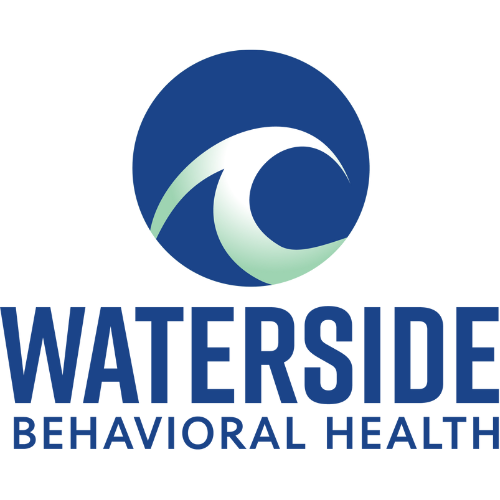Negative thinking patterns can be a major barrier to personal growth, happiness, and mental well-being. These unhelpful thought processes often contribute to anxiety, depression, and trauma-related disorders, trapping individuals in a cycle of self-doubt, worry, and low self-esteem.
Cognitive-Behavioral Therapy (CBT) is one of the most effective, research-backed approaches to overcoming negative thinking. By helping individuals identify, challenge, and replace irrational thoughts, CBT provides practical tools to reshape mindsets and behaviors.
At Waterside Behavioral Health, we specialize in Cognitive-Behavioral Therapy in Massachusetts, offering personalized treatment as part of our mental health treatment programs in Massachusetts. This guide explores how CBT helps break negative thought cycles, why it’s so effective, and who can benefit from it.
Understanding Negative Thinking Patterns
Negative thinking patterns, also known as cognitive distortions, are habitual, automatic ways of interpreting situations that are biased, unrealistic, and often harmful. These distorted thoughts fuel emotional distress, reinforce low self-worth, and increase anxiety and depression.
Common Cognitive Distortions
1. All-or-Nothing Thinking (Black-and-White Thinking)
Viewing things in absolute extremes, with no middle ground.
- Example: “If I don’t succeed completely, I’m a total failure.”
2. Catastrophizing
Expecting the worst-case scenario, even when evidence suggests otherwise.
- Example: “If I mess up this presentation, I’ll lose my job.”
3. Overgeneralization
Drawing broad negative conclusions based on a single event.
- Example: “I got rejected once, so I’ll never be in a happy relationship.”
4. Personalization
Blaming yourself for things beyond your control.
- Example: “My friend is upset—it must be because of something I did.”
5. Mind Reading
Assuming you know what others are thinking, usually in a negative way.
- Example: “They didn’t text back, so they must hate me.”
6. Emotional Reasoning
Believing that your emotions define reality.
- Example: “I feel worthless, so I must be worthless.”
7. “Should” and “Must” Statements
Placing unrealistic expectations on yourself or others.
- Example: “I should always be happy. If I’m not, something is wrong with me.”
How CBT Helps Overcome Negative Thinking
CBT is highly effective at rewiring negative thought patterns, helping individuals develop healthier perspectives and behaviors.
1. Identifying Automatic Negative Thoughts
CBT helps individuals recognize their negative thought patterns by increasing awareness of their internal dialogue.
- Example Exercise: Keeping a thought journal to track automatic negative thoughts (ANTs) and how they affect emotions.
2. Challenging and Reframing Thoughts
Once negative thoughts are identified, CBT teaches individuals to challenge and reframe them through cognitive restructuring.
- Before CBT: “I failed my exam, so I’m stupid and will never succeed.”
- After CBT: “One exam doesn’t define my intelligence. I can learn from my mistakes and improve next time.”
3. Exposure Therapy for Fear-Based Thoughts
For individuals with anxiety disorders, CBT uses exposure therapy to gradually desensitize fears.
- Example: Someone with social anxiety might start by saying “hello” to a stranger and work up to having full conversations.
4. Behavioral Experiments to Challenge Assumptions
CBT encourages individuals to test their negative assumptions in real-world scenarios.
- Example: Someone who believes, “Nobody cares about me,” may be encouraged to reach out to a friend and observe their response.
5. Teaching Mindfulness and Thought Diffusion
CBT incorporates mindfulness techniques to help individuals detach from negative thoughts instead of engaging with them.
- Example Technique: Imagining thoughts as leaves floating down a river, allowing them to pass without reacting emotionally.
Why CBT Is Highly Effective for Negative Thinking
1. Scientifically Proven Approach
- Research consistently shows CBT is as effective as medication for many mental health conditions.
- CBT is a first-line treatment for anxiety and depression due to its long-term benefits.
2. Teaches Lasting Coping Skills
CBT doesn’t just relieve symptoms—it equips individuals with lifelong tools to prevent relapse and manage stress.
3. Focuses on the Present and Future
Unlike therapies that focus heavily on past experiences, CBT is solution-focused, helping individuals make immediate positive changes.
4. Customizable and Versatile
CBT is adaptable and can be combined with:
- Dialectical Behavior Therapy in Massachusetts for emotional regulation.
- Trauma Therapy in Massachusetts for PTSD.
- Medication management when necessary.
Who Can Benefit from CBT for Negative Thinking?
CBT is effective for anyone struggling with persistent negative thoughts, especially those dealing with:
1. Anxiety Disorders
CBT is widely used for anxiety treatment in Massachusetts, helping individuals:
- Manage generalized anxiety, panic attacks, and social anxiety.
- Challenge irrational fears and gain confidence.
2. Depression
CBT is a core treatment in depression therapy in Massachusetts, teaching individuals to reframe hopelessness and increase motivation.
3. Trauma and PTSD
For individuals struggling with trauma-related negative thoughts, CBT techniques like exposure therapy help reshape how they process past experiences.
4. Stress and Self-Doubt
Even individuals without a mental health disorder can use CBT techniques to:
- Reduce self-criticism and perfectionism.
- Improve self-confidence and resilience.

Daily Practices to Reinforce CBT Techniques
To sustain positive thinking after therapy, incorporating daily CBT-based practices is essential.
1. Thought Journaling
- Write down negative thoughts and rational counterarguments daily.
- Track how your mindset shifts over time.
2. Practicing Gratitude
- Keep a gratitude journal to focus on positive experiences rather than dwelling on the negative.
3. Cognitive Reframing
- When facing stressful situations, ask:
- “What’s a more balanced way to view this?”
- “Is there evidence supporting this fear?”
4. Exposure to Positivity
- Surround yourself with uplifting media, supportive people, and affirmations that reinforce confidence.
5. Physical Activity and Relaxation
- Exercise boosts mood and reduces stress hormones.
- Deep breathing, meditation, and mindfulness calm overactive negative thoughts.
Start Overcoming Negative Thinking Today with CBT
If negative thinking patterns are holding you back, Cognitive-Behavioral Therapy can help rewire your mindset for lasting change.
At Waterside Behavioral Health, we offer:
- Personalized CBT sessions tailored to your needs
- Comprehensive mental health treatment programs in Massachusetts
- A compassionate team of therapists dedicated to your healing
Call Waterside Behavioral Health today at 774.619.7750 to learn more about Cognitive-Behavioral Therapy in Massachusetts and schedule a consultation. Take the first step toward positive thinking and emotional freedom today!
FAQ About CBT for Negative Thinking
How does Cognitive-Behavioral Therapy (CBT) help with negative thinking?
CBT helps individuals identify, challenge, and reframe negative thought patterns that contribute to anxiety, depression, and low self-esteem. It teaches practical coping strategies to replace irrational thoughts with healthier perspectives.
What are some common negative thinking patterns that CBT addresses?
CBT helps correct cognitive distortions, such as:
- All-or-Nothing Thinking: Viewing situations in extremes (e.g., success vs. failure).
- Catastrophizing: Expecting the worst-case scenario.
- Mind Reading: Assuming what others think, often negatively.
- Emotional Reasoning: Believing that emotions define reality.
Is CBT only for anxiety and depression?
No, CBT is effective for a wide range of mental health conditions, including:
- Anxiety disorders (panic attacks, social anxiety, OCD).
- Depression and low self-esteem.
- Trauma and PTSD.
- Stress, anger management, and relationship challenges.
How long does it take to see results with CBT?
Most individuals notice improvements within 8 to 20 therapy sessions, depending on the severity of their negative thought patterns and engagement in therapy.
Can CBT help with self-confidence and motivation?
Yes! CBT helps individuals develop positive self-talk, overcome self-doubt, and build confidence by restructuring limiting beliefs about their abilities.
What techniques does CBT use to challenge negative thinking?
CBT employs strategies like:
- Thought Journaling: Tracking and evaluating negative thoughts.
- Cognitive Restructuring: Reframing distorted thoughts.
- Behavioral Experiments: Testing assumptions in real-life situations.
- Mindfulness Techniques: Reducing emotional reactivity to negative thoughts.
Can CBT be combined with other therapies?
Absolutely. CBT works well alongside:
- Dialectical Behavior Therapy (DBT) for emotional regulation.
- Trauma Therapy Program for PTSD and past emotional wounds.
- Medication management for individuals with severe anxiety or depression.




